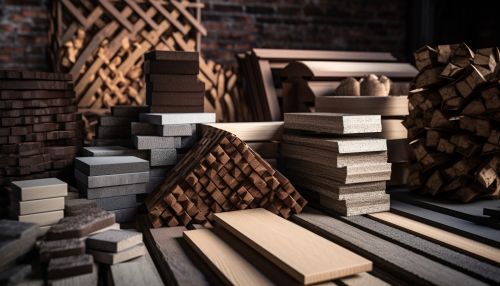Building Materials
Introduction
Building materials are the substances used for construction purposes. They are categorized into two types: natural and synthetic materials. Natural materials are those that are unprocessed or minimally processed by industry, such as lumber and glass. Synthetic materials, also known as man-made materials, are the result of human intervention, resulting in substances and compounds that don't naturally occur in nature, such as plastic and cement.


Natural Building Materials
Wood
Wood is a product of trees, and sometimes other fibrous plants, used for construction purposes when cut or pressed into lumber and timber, such as boards, planks and similar materials. It is a generic building material and is used in building just about any type of structure in most climates.
Stone
Stone has been used as a building material for thousands of years. It has long been admired for its strength and beauty. Stone is used in various forms from raw stone blocks to polished slabs, and is used in building walls, floors, and other structures.
Clay
Clay is a type of fine-grained natural soil material that contains hydrous aluminium phyllosilicates. It is used in making bricks, tiles, and other forms of ceramics. Clay is also used in many forms of pottery, both utilitarian and decorative.
Synthetic Building Materials
Cement
Cement is a binder, a substance used for construction that sets, hardens, and adheres to other materials to bind them together. Cement is seldom used on its own, but rather to bind sand and gravel (aggregate) together.
Steel
Steel is an alloy of iron with typically a few percent of carbon to improve its strength and fracture resistance compared to iron. It is commonly used in construction due to its long-lasting nature and durability. Steel is used in a wide variety of construction materials, from the steel beams in buildings to the nuts and bolts holding them together.
Plastic
Plastic is a material consisting of any of a wide range of synthetic or semi-synthetic organic compounds that are malleable and so can be molded into solid objects. Plasticity is the general property of all materials which can deform irreversibly without breaking but, in the class of moldable polymers, this occurs to such a degree that their actual name derives from this specific ability.
